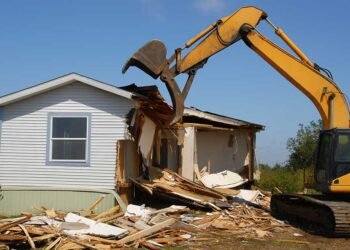Roofing serves as the protective crown of any structure, shielding it from the adversities of weather and environmental elements. It is an integral aspect of construction, encompassing various materials and methodologies to ensure durability, functionality, and aesthetic appeal. Understanding the significance of Tulsa roofing entails delving into its multifaceted roles and the diverse array of materials available.
Introduction
Roofing, in its essence, refers to the construction or assembly of materials to form a protective covering over a structure. Beyond mere aesthetics, roofing is a critical component of building construction, offering paramount importance in safeguarding the interior environment from external influences. Its significance lies not only in providing shelter but also in enhancing structural integrity and energy efficiency. An overview of roofing materials elucidates the diverse options available, each with its unique characteristics and suitability.
Functionality of Roofing
The functionality of roofing manifests in various facets, primarily revolving around protection, structural support, and energy conservation. Firstly, roofing acts as the primary barrier against natural elements such as rain, snow, wind, and sunlight, safeguarding the interior spaces from moisture infiltration and structural damage. Furthermore, a well-constructed roof contributes to the overall structural integrity of the building, distributing loads evenly and preventing structural compromises. Moreover, modern roofing designs integrate energy-efficient technologies, regulating indoor temperatures and reducing reliance on mechanical heating and cooling systems.
Types of Roofing Materials
The choice of roofing materials significantly impacts the performance, longevity, and aesthetics of the structure. Among the plethora of options available, asphalt shingles stand as the most popular choice due to their affordability, versatility, and ease of installation. Metal roofing, characterized by its durability and recyclability, offers a contemporary alternative suitable for both residential and commercial applications.
Clay tiles, renowned for their longevity and classic appeal, find prevalence in Mediterranean and Spanish architectural styles. Slate roofing exudes elegance and sophistication, boasting unparalleled durability and resistance to fire and adverse weather conditions. Wood shingles, though less common, evoke a rustic charm and eco-friendliness, albeit requiring meticulous maintenance.
Sustainability and Durability:
Beyond protection, roofing plays a pivotal role in maintaining the structural integrity of a building. It distributes the weight of snow, rainfall, and any other external loads evenly across the structure, preventing undue stress on walls and foundations. This structural stability ensures the longevity of the building, reducing the need for costly repairs and renovations in the long run.
Moreover, with the growing emphasis on sustainability and energy efficiency, roofing has evolved to encompass innovative technologies and materials. Reflective coatings and insulated layers help regulate indoor temperatures, reducing the reliance on heating and cooling systems. This not only lowers energy costs but also minimizes the carbon footprint of buildings, contributing to a greener and more sustainable future.
Factors Influencing Roofing Choices
Several factors influence the selection of roofing materials, ranging from geographical location and climate to budgetary constraints and aesthetic preferences. The climatic conditions of a region dictate the type of roofing material best suited to withstand prevalent weather patterns, whether it be intense heat, heavy precipitation, or strong winds. Budget considerations play a pivotal role, with various roofing materials exhibiting a wide range of costs, installation expenses, and long-term maintenance requirements.
Additionally, aesthetic preferences and architectural styles influence the choice of roofing materials, with each option offering distinct visual characteristics and design elements. Moreover, considerations of longevity, durability, and eco-friendliness weigh heavily in the decision-making process, ensuring the longevity and sustainability of the roofing system.
Maintenance and Care for Roofs
Effective maintenance and care practices are essential for prolonging the lifespan and performance of roofing systems. Regular inspections, conducted by professionals or homeowners, enable early detection of potential issues such as leaks, damaged shingles, or deteriorating flashings. Routine cleaning and debris removal prevent the accumulation of debris, leaves, and moss, which can compromise drainage systems and promote moisture retention.
Timely repair and restoration activities address minor damages and wear, preventing them from escalating into costly repairs or replacements. Additionally, proactive measures such as applying protective coatings or sealants enhance the durability and weather resistance of roofing materials, ensuring their longevity and functionality.
Conclusion
Roofing transcends its utilitarian function to become a defining feature of architectural design, embodying durability, aesthetics, and environmental sustainability. The importance of roofing lies not only in providing shelter but also in preserving the structural integrity, energy efficiency, and visual appeal of buildings. By understanding the diverse array of roofing materials, factors influencing their selection, and maintenance practices, homeowners and builders can make informed decisions to ensure the longevity and performance of their roofing systems.












